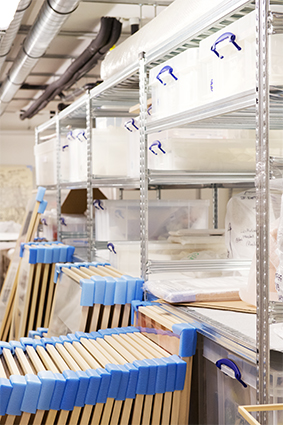
THE COLLECTION
The Trinkhall collection boasts over 3,000 works, patiently put together for what is now forty years. It certainly has some very selective affinities with the great collections of art brut and outsider art; however, it differs both in its history and its physiognomy. In a nutshell: if the workshop's artistic creations can be compared to, and “tolerated” within art brut and outsider art collections, they are central to the Trinkhall collection. The difference may only seem circumstantial. In fact, it is fundamental and decisively commits to the identity and relevance of our museum and the exceptional importance of its collection.
The Trinkhall museum project is based on a critical examination of the collection; of its history, its richness, its uniqueness and the space we want it to occupy in the world of art and culture, both on a national and international level. On the one hand, the extraordinary diversity of the collection and, on the other, the central theme of the workshop, highlight the inadequacy of the conventional categories - art brut or outsider art - in terms of definition. Contrary to any essentialist perspective, workshop art expresses the crucial importance of the irreducibly collective processes of creation. In this respect, the studio is a place chosen to make it possible to experience and contemplate the very conditions of artistic expression. From its relatively marginal position, enabling the so-called "expressive power of the fragile worlds,” the workshop is a privileged laboratory which fervently reveals what may be referred to as “the artistic condition,” in its every dimension, be it aesthetic, social, cultural or political.
The Trinkhall's responsibility is to ensure the cultural heritage and the promotion and study of these artworks, which are often under threat, when they are not under the scrutiny of gallery owners or unscrupulous dealers. Our acquisition policy is directly in line with the perspective of “the invention” of what we feel to be major artworks that do not yet enjoy the notoriety they deserve or are not destined to be a long-term part of the world of art and culture. To live up to this ambition, we need to bring together pieces by individual artists that are coherent and large enough to allow for their dissemination and in-depth study. This acquisition policy involves a close partnership with the workshops where these pieces are produced. We must emphasise that this is not about acquiring artworks with a fully established reputation, but protecting and promoting those which may be hoping for recognition. This is one of the museum's most exciting missions and one of the most important responsibilities that we intend to fulfil.